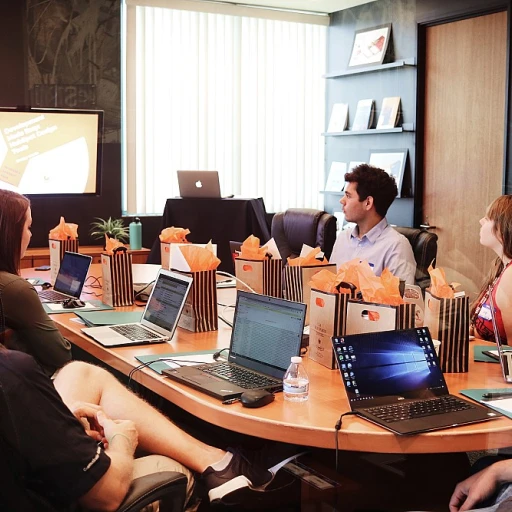
Understanding Workplace Mapping
Mapping Your Workplace: A Guide to Strategic Organization
Understanding the ins and outs of your workplace doesn't just come down to knowing where the coffee machine is. Fundamental to workplace organization and the efficiency of a company is the concept of workplace mapping. The act of mapping is essential for identifying how different members of a team interact with each space, and how this interaction influences their productivity.
When it comes to effective workplace mapping, it's more than just creating a floor map. It involves a comprehensive look at the work areas within the office and understanding the dynamics of each department. This includes real-time functionality, which allows for ongoing adjustments as changes happen within the community.
Mapping your workplace also involves organizing the office in a way that promotes clear communication channels. For instance, reps branch and help identify potential issues like union activity or organizing sites that need attention. This can significantly contribute to better management workplace strategies.
A strategic workplace map not only helps to visualize physical layouts but also aids in navigating terms conditions that affect different team members. In terms of privacy policy adherence or managing anti-union issues, proper mapping provides clarity and common understanding amongst the workforce.
Mapping workplace activities and interactions helps to maximize work space utilization, which in turn boosts workforce efficiency. Strategic planning through thoughtful mapping can ultimately create a seamless work environment, fostering collaboration and innovation. Explore how leveraging technology can enhance your organizational performance to align with workplace maps by visiting this resource.
Key Elements of Effective Workplace Mapping
Identifying Core Components of Strategic Mapping
To successfully enhance workplace efficiency, it's crucial to focus on several critical components when crafting a workplace map. This approach not only aids in better organisation but also streamlines communication channels and facilitates smoother operations across departments.
- Accurate Work Area Identification: Designing a floor map that reflects real-time workloads and accurately represents each department's space and tasks assists in managing resources effectively.
- Integration of Community and Culture: Acknowledging the community and cultural aspects of the workplace ensures that maps reflect not just physical boundaries but also the social connections between members, including reps branch and union activities.
- Identifying Critical Issues: A well-crafted map will help identify potential issues before they arise. This includes understanding health and safety requirements, anti-union activities, and aligning with the company's privacy policy.
- Tracking Terms and Conditions: Incorporating terms and conditions into workplace mapping helps ensure compliance and transparency within the office environment.
- Real-Time Updates: Implementing dynamic and interactive workplace maps allows for real-time monitoring and management, aligning with current requirements and enhancing the overall management workplace strategy.
Integrating these elements into workplace mapping can streamline processes, optimise resource allocation, and enhance communication among all workplace members, ultimately contributing to a more efficient and harmonious work environment.
Benefits of Workplace Mapping in HR Communication
Real-Time Communication Enhancements
Leveraging workplace mapping strategies can significantly enhance HR communication by ensuring real-time alignment among various departments and members. A well-executed workplace map offers a clear depiction of work areas, helping identify potential issues before they escalate. This involves creating maps that show the layout of spaces, such as a floor map, to facilitate better understanding and coordination.Boosting Clarity and Efficiency
By visually organising workspaces, mapping essential initiatives can streamline communication paths, thus aiding office representatives and reps branch members in quickly navigating terms and conditions across the site. In scenarios where union activity is common, mapping helps in maintaining transparency while respecting the privacy policy. This way, workplace maps serve as a tool to counter potential anti-union sentiments by fostering an inclusive community.Facilitating Space Management
With the help of workplace mapping, management can efficiently organise spaces that cater to health safety standards. This not only contributes to a better work environment but also helps in the smooth functioning of branches across different sites. Understanding the physical and functional layout through mapping will help align HR objectives with the overall organisational goals. For more insights on enhancing workplace efficiency, explore how HR shared services can further support strategic objectives.Challenges in Implementing Workplace Mapping
Addressing Challenges in Workplace Mapping
Implementing workplace mapping within an organization might appear straightforward but poses significant challenges in practice. Understanding these hurdles is crucial to developing effective strategies that ensure success. One primary issue involves coordinating multiple departments and syncing their objectives with the overall workplace map. Members from each division must collaborate, requiring clear communication and alignment on terms and conditions.
Another hurdle is privacy concerns. As workplace mapping often necessitates collecting data on work areas, people might be wary of how their information is utilized. An organization's privacy policy becomes integral to maintaining trust. Transparent communication about data use, ensuring compliance with relevant laws, and establishing protocols to safeguard sensitive information will help alleviate these concerns.
Furthermore, union activity and anti-union sentiment can complicate workplace mapping initiatives. Mapping essential elements like union reps' branch locations and potential bargaining sites demands careful diplomacy to prevent conflicts. Proactively involving union representatives in the mapping process can help identify issues early and foster a community spirit among office members.
Real-time updates and adaptability of workplace maps also present challenges. The dynamic nature of workspaces necessitates regular updates to ensure that mappings reflect current conditions. However, logistical complexities, such as updating floor plans or accommodating sudden space reconfigurations, can impede real-time accuracy.
Tackling these challenges requires a comprehensive approach involving strategic planning, all-encompassing communication, and active engagement with all stakeholders. Mapping extends beyond creating a floor map; it embodies an ongoing commitment to continually improve the work environment.
Case Studies: Successful Workplace Mapping Initiatives
Real-world Lessons from Successful Initiatives
Examining successful workplace mapping initiatives offers valuable lessons and insights that can be applied to various business contexts. Understanding how other organizations have navigated the process will help your team effectively implement mapping strategies in your work areas.- Site-specific Mapping Movement: One multinational corporation successfully utilized workplace maps to optimize space utilization across multiple sites and offices. By employing strategic mapping, they were able to reorganize work areas and improve members’ interactions within departments. This movement not only helped in enhancing productivity but also played a crucial role in ironing out anti-union feelings and aligning terms conditions for better workplace management.
- Departmental Space Reorganizations: A leading tech firm used real-time workplace mapping to identify areas with high foot traffic and potential health safety concerns. Through mapping, they managed to streamline works into dedicated spaces, ensuring that employees could engage in union activity with minimal disruption. Keeping in mind privacy policy and regulatory compliance was essential throughout.
- Mapping for Remote and On-site Efficiency: A renowned healthcare organization integrated workplace mapping essential for both their real-world sites and virtual office spaces. This dual-location mapping facilitated seamless organising between remote teams and on-site reps branch, reducing issues related to communication gaps and spatial layout inefficiencies. As such, a well-coordinated map will help promote community while addressing challenges stemming from digital cookies site considerations.
Best Practices for Workplace Mapping in HR
Strategies for Effective Workplace Mapping Practices
Enhancing the effectiveness of workplace mapping requires implementing proven strategies that align with the specific needs of the organization. Below are essential practices that will help:- Organize Collaborative Efforts: Engage different members of the office's departments and branches to provide input on mapping workplace areas. Creating a space for collaboration will help identify any work areas that may not be efficiently organized, particularly for reps branch involved in day-to-day operations.
- Utilize Technology for Real Time Updates: Implement technological tools that allow for real-time updates to your workplace maps. This can enhance the ability of management workplace teams to adapt quickly to changes, particularly in dynamic spaces such as floors or communal areas. Mapping essential adjustments on a floor map or workplace map ensures that all employees have the latest information, preventing issues in organizing resources.
- Privacy and Terms Considerations: Adhere to privacy policy standards and terms conditions when mapping out workplace territories. Transparency concerning the use of cookies site data and respect for privacy is crucial, especially regarding health safety measures and anti union concerns that may arise during mapping exercises.
- Focus on Community Building: Foster a sense of community among employees by mapping areas that encourage social interaction and ease of union activity. This approach not only assists in organizing spaces effectively but also nurtures a supportive work environment.
- Regular Reviews and Updates: Periodically review and update the workplace map to address evolving workplace needs and issues effectively. Scheduling time for regular reviews will help in maintaining a functional and efficient mapping workplace plan that meets current demands.
- Training and Development: Offer training sessions for employees to understand and engage in workplace mapping activities. Knowledge sharing regarding the purpose and utility of mapping can enhance overall engagement and ownership of the process, making it easier to resolve workplace challenges as they arise.











